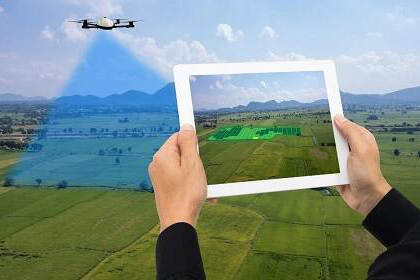Spain: What is the potential of Spanish agriculture?
Only the technification and digitalization of the agricultural sector will allow an 8.8% increase in plant production in Spain in 2050, according to a PwC report. The cumulative impact to reach that goal would mean €54.62 billion in the next three decades.

Is Spanish agriculture prepared to play a relevant role in the global food challenge in the coming years? Will it be able to overcome its weaknesses and take advantage of its strengths to turn a threat into an opportunity? And, fundamentally, how can do it?
J. Esteve and R. Antón, from PwC, tried to answer those questions in their study, “The future of the Spanish agricultural sector”, prepared for Aepla, the sectoral organization of phytosanitary products.
“This is a deep analysis of the sector, in which some of the main challenges are defined and solutions that could lay the foundations of a strategy are pointed out”, C. Palomar, CEO of Aepla, said.
A strategy, the report warns, that we must begin to define immediately because “otherwise, the future of the sector can be seriously compromised”.
In Spain, agriculture is a strategic sector, not only because of its economic contribution, but also because of its value from a social, territorial and environmental point of view. In 2017, it directly employed 749,000 workers, generating a production of €25.3 billion in revenues and it exported goods for €17.4 billion, with a surplus in the trade balance of €6.6 billion.
For Esteve and Antón, Spain has a “privileged situation” in agricultural matters and a “successful position” in international markets. Its meteorological conditions are especially favorable for agricultural practice, allowing it to be at the Europe forefront regarding agricultural acreage, production and employment, as well as in crop diversity. High standards of quality and safety thanks to the EU rules are added to this.
On the other hand, it has evident weaknesses such as its atomization, high dependence on CAP financing, its limited capacity to attract young people and trained workers and its scarce investments in innovation.
Based on this, the PwC report stablishes priority action lines. From the economic point of view, it is necessary to increase productivity, improve efficiency and focus on the market and the consumers. From the local point of view, preserve the natural environment and achieve more jobs that are qualified. And regarding environmental matters, the sector must improve the resources efficiency and mitigation and adaptation to climate change.
The commitment to modernization, digitalization and the development of R&D&I are the levers to achieve these objectives.
In terms of production, the technification and digitalization of agriculture could increase Spanish agricultural production by a significant 8.8% in 2050. In monetary terms, this could generate an impact of €3.3 billion in terms of production in 2050 and a cumulated impact of €54.7 billion over the next 30 years.
Likewise, the no-till techniques part of conservation agriculture could increase Spanish production by 2.7% in 2050. In monetary terms, the impact could reach €1 billion in 2050 and near cumulated €17 billion.
In addition to this, the development of products and solutions to new pests could allow to increase production by 11.9% in three decades. In monetary terms, this impact could reach €4.5 billion in 2050 and cumulated €73.5 billion.
Furthermore, the development of crop varieties adapted to the new climatic conditions could allow a 12.9% increase in production. In monetary terms, this impact could reach €4.8 billion in 2050 and a cumulated €79.7 billion.
We must also consider the cost savings and the rationalization in the natural resources use. For example, only the extension of conservation agriculture to its maximum potential could generate saving of €807 million per year, which, cumulatively, could generate savings of up to €13.3 billion in the next 30 years. In a complementary way, the expansion of this practice could prevent the emission of 741 million tons of CO2 from now until 2050.
Source: Eleconomista.es